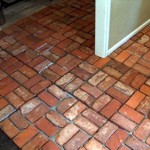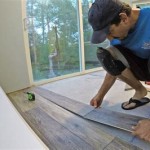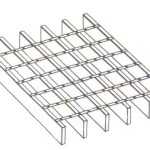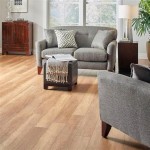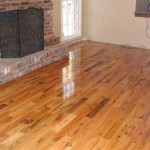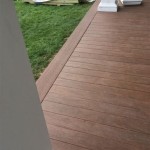Fake Hardwood Flooring: An Affordable and Durable Alternative
Fake hardwood flooring, also known as laminate flooring, has become increasingly popular in recent years due to its affordability, durability, and wide range of options. It mimics the look and feel of real hardwood flooring without the high cost or demanding maintenance. Here are some essential aspects to consider when exploring fake hardwood flooring.
Construction and Composition
Fake hardwood flooring typically consists of multiple layers: a backing layer, a core layer, a printed decorative layer, and a wear layer. The core layer is usually made of high-density fiberboard (HDF) or medium-density fiberboard (MDF), providing stability and moisture resistance. The decorative layer showcases the faux hardwood grain, while the wear layer protects the flooring from scratches and wear.
Types and Styles
Fake hardwood flooring comes in a vast array of types and styles. It can replicate the look of various wood species, such as oak, maple, walnut, and cherry. It is also available in different plank sizes and finishes, including distressed, hand-scraped, and beveled edges, allowing for customization to match any décor.
Installation and Maintenance
Installing fake hardwood flooring is relatively straightforward compared to real hardwood. It uses a click-lock or glue-down system that eliminates the need for nails or adhesives. Maintenance is equally effortless; regular sweeping, vacuuming, and occasional mopping with appropriate cleaning solutions will keep it looking its best.
Advantages and Disadvantages
Advantages:
- Affordability: Significantly more cost-effective than genuine hardwood flooring.
- Durability: Resistant to scratches, stains, and moisture damage, making it ideal for high-traffic areas.
- Ease of installation: Click-lock or glue-down systems allow for quick and simple installation.
- Wide selection: Available in a wide range of colors, styles, and finishes to suit any taste.
- Not as authentic: Lacks the natural grain and texture of real hardwood.
- Longevity: Typically has a shorter lifespan compared to genuine hardwood.
- Moisture sensitivity: While moisture-resistant, prolonged exposure to water can cause damage.
Choosing the Right Fake Hardwood Flooring
When selecting fake hardwood flooring, consider the following factors:
- Foot traffic: Choose flooring with a higher AC rating for areas with high foot traffic.
- Moisture resistance: Opt for water-resistant flooring if the room is prone to moisture.
- Style: Consider the type of wood species, plank size, and finish that complements your décor.
- Underlayment: Use an underlayment to provide additional cushioning and sound reduction.
Conclusion
Fake hardwood flooring is an excellent option for homeowners seeking an affordable, durable, and stylish alternative to genuine hardwood. Its versatility, ease of installation, and low maintenance requirements make it a practical choice for both residential and commercial applications. With careful consideration of the advantages, disadvantages, and selection factors, you can find the perfect fake hardwood flooring to elevate your space.

The Best Fake Wood Flooring 4 Faux Floor Ideas Inc

8 Fake Wood Flooring Options 2024 A Full Guide And Reviews

The Best Fake Wood Flooring 4 Faux Floor Ideas Inc

Is Engineered Hardwood Real Or Fake Wood

Faux Hardwood Floor Interlocking Foam Tiles 25 Pack Fake Wood Flooring Gym Room At Home

Laminate Flooring The Home Depot

Laminate Wood Flooring Ideas

Engineered Hardwood Vs Laminate Flooring What S The Difference

Laminate Vs Hardwood Flooring Difference And Comparison Diffen

Laminate Vs Hardwood Flooring Major Differences Forbes Home

